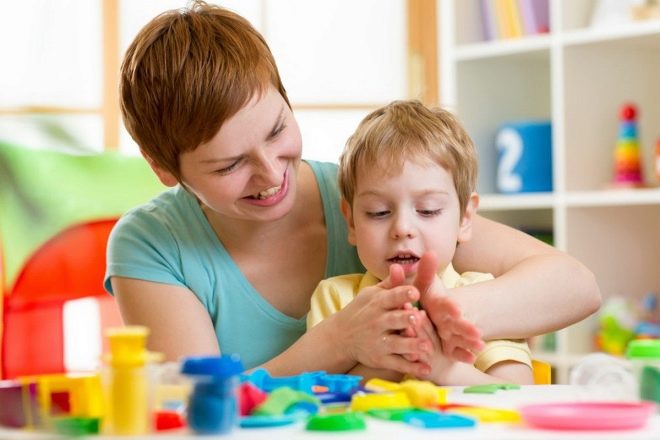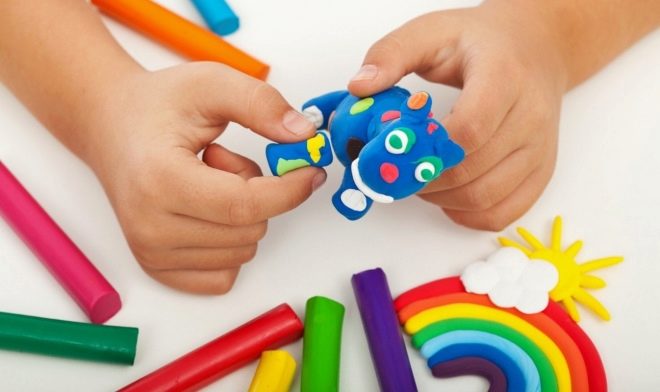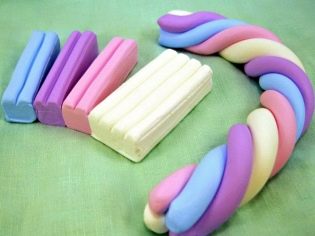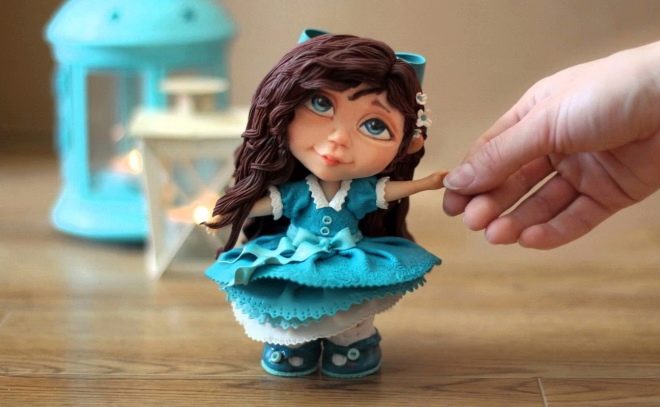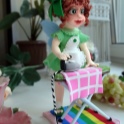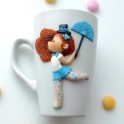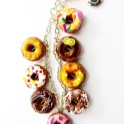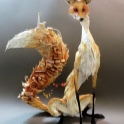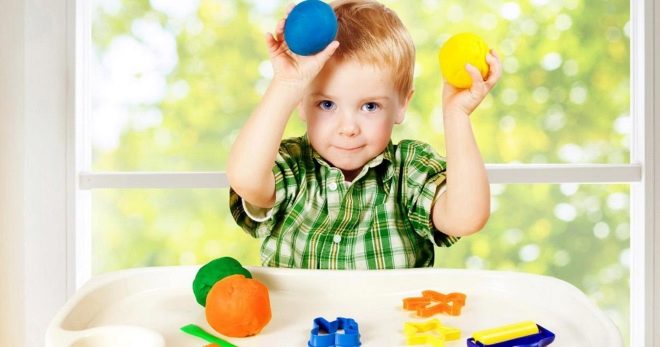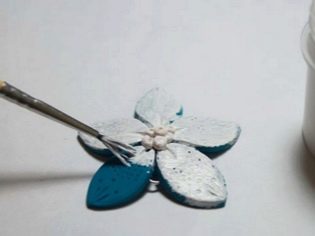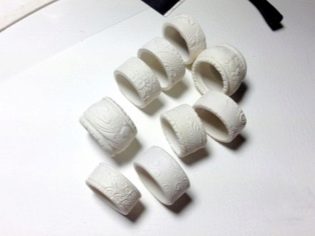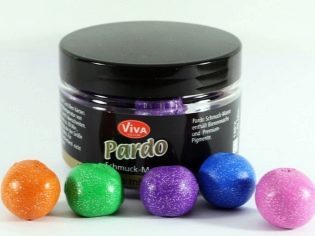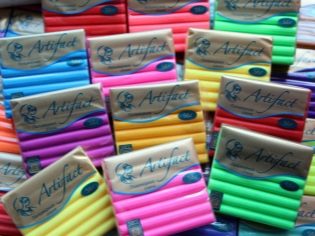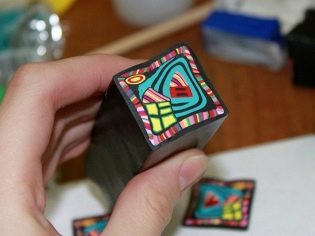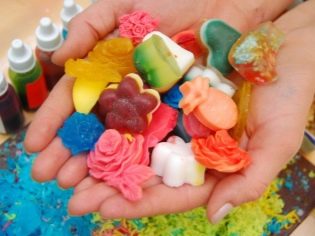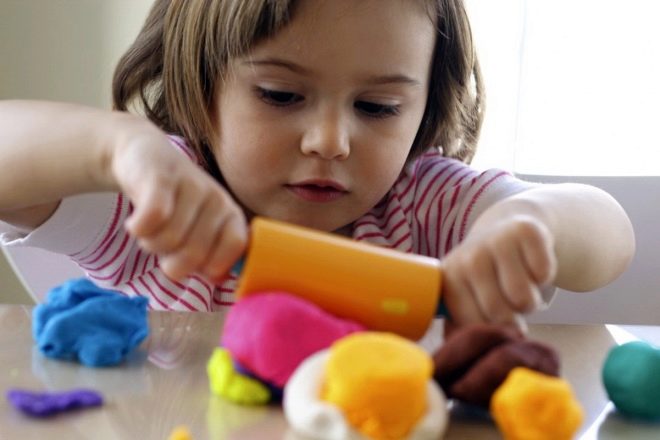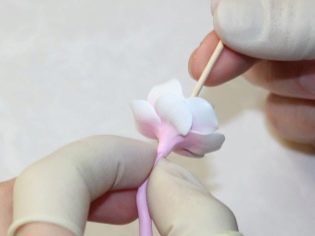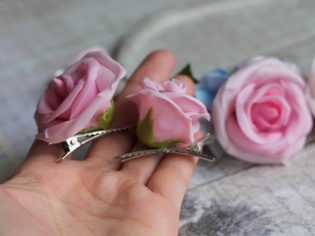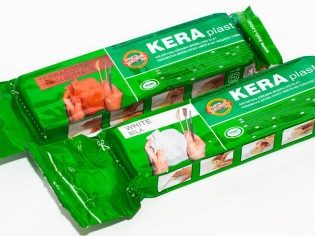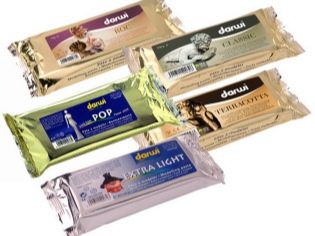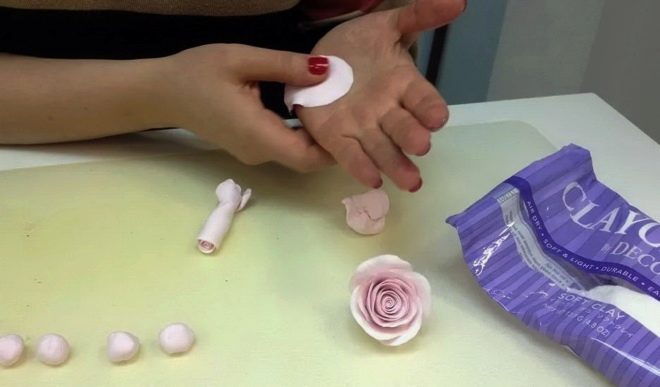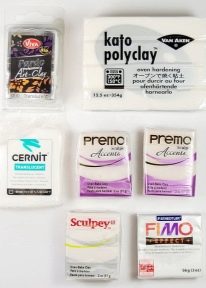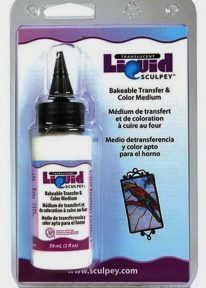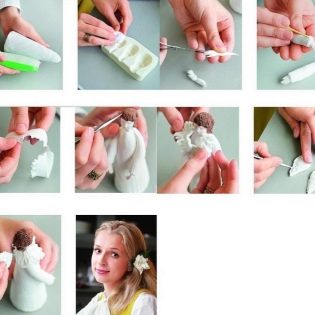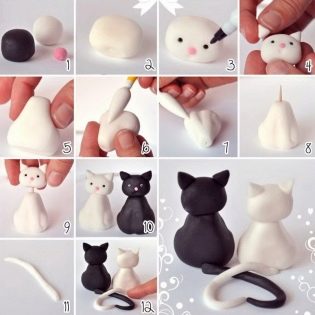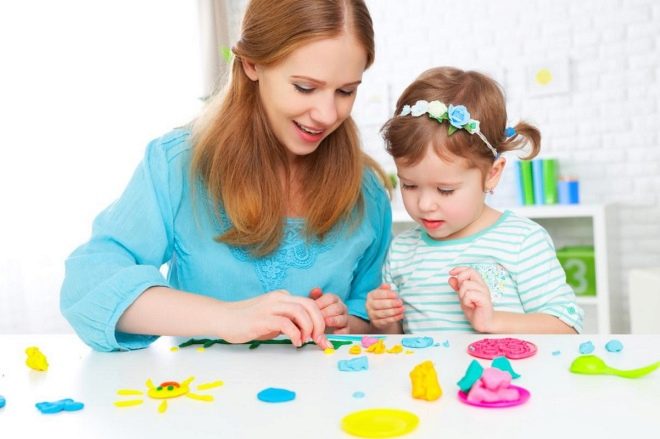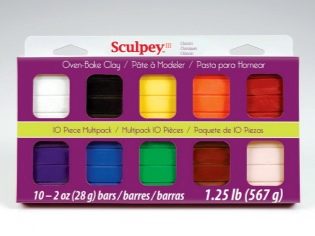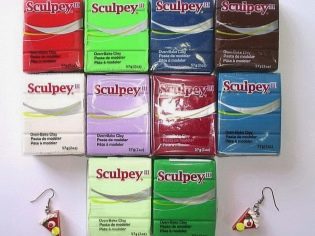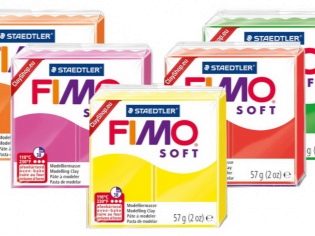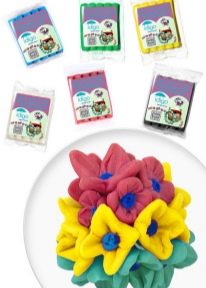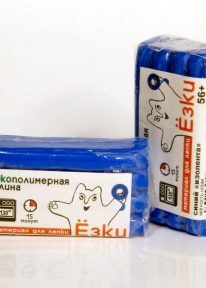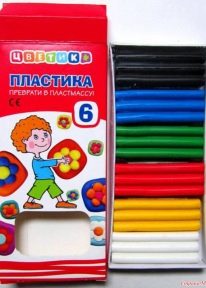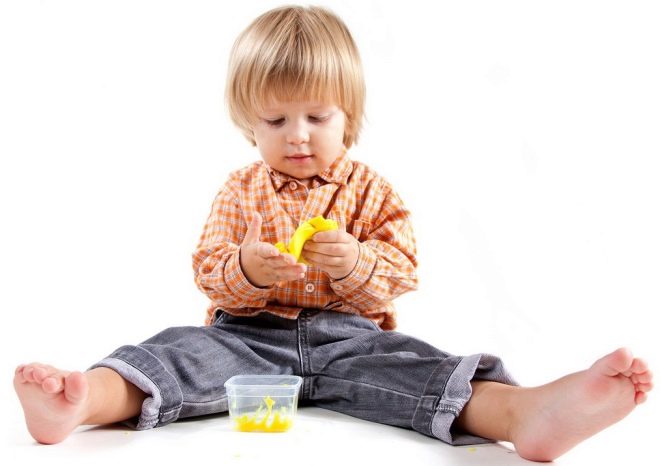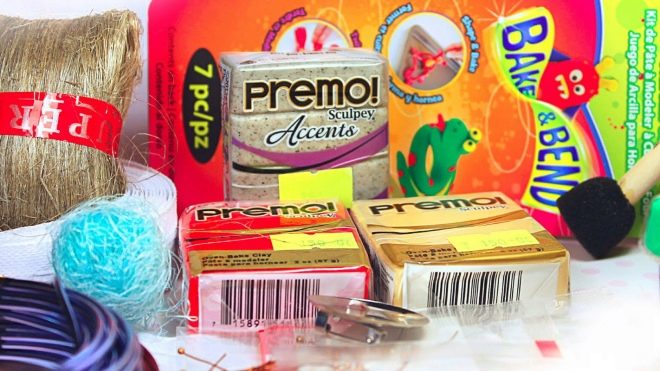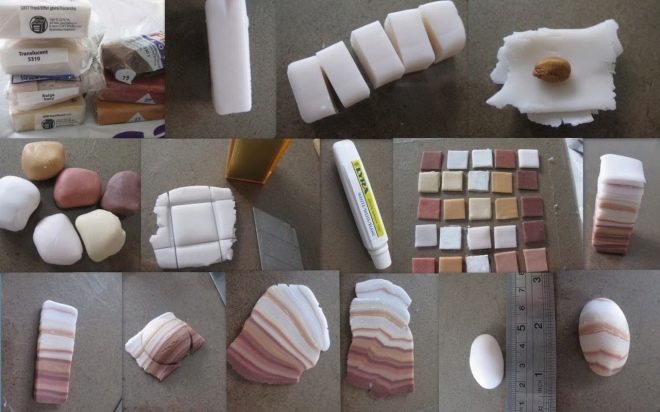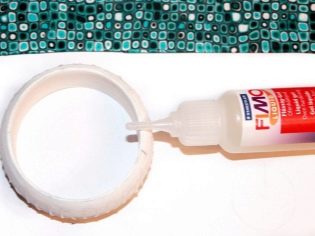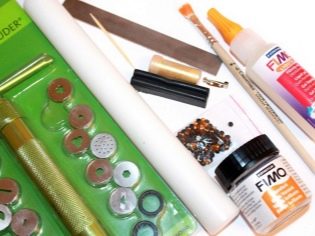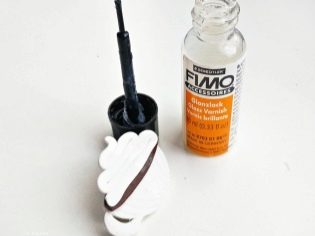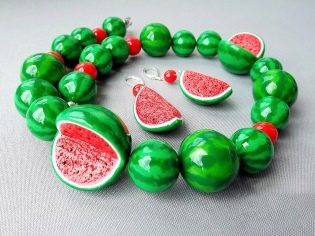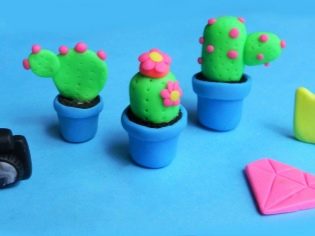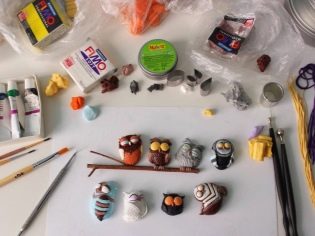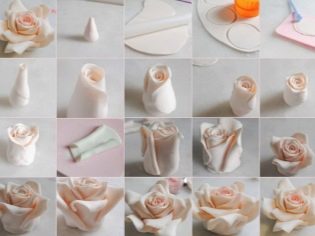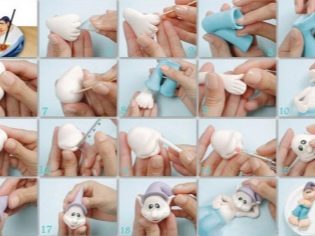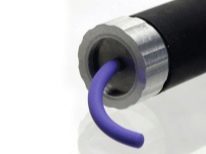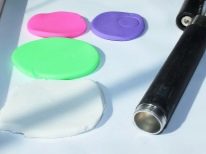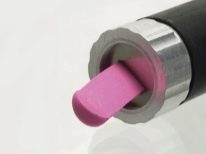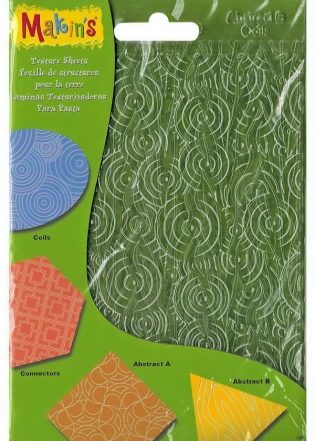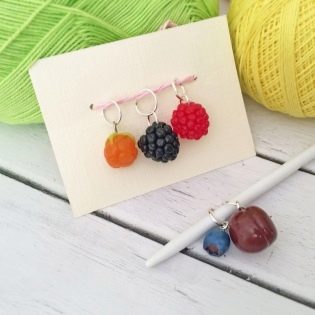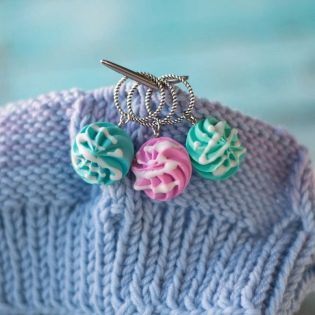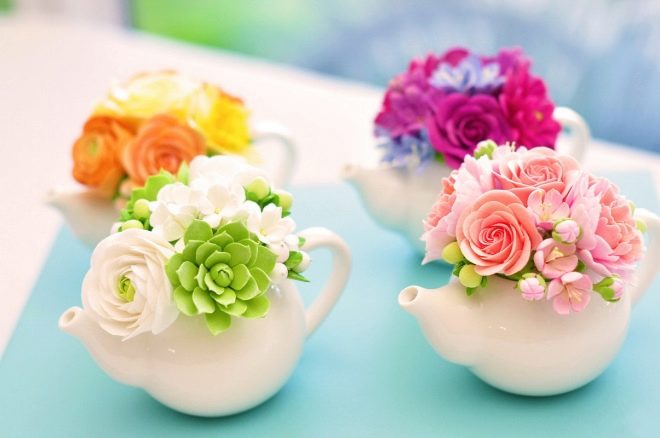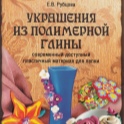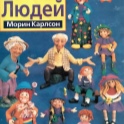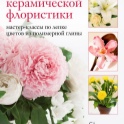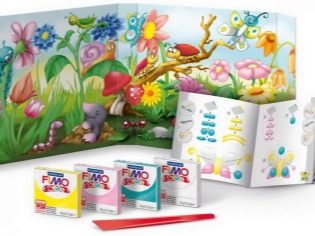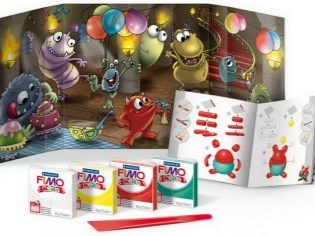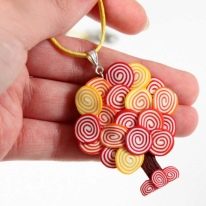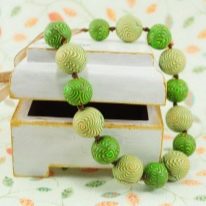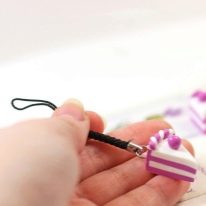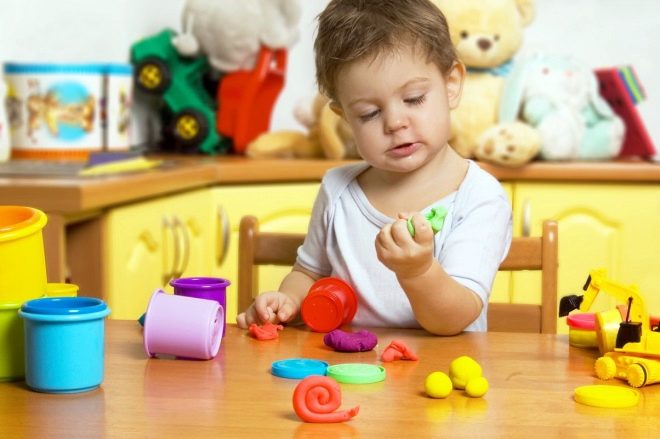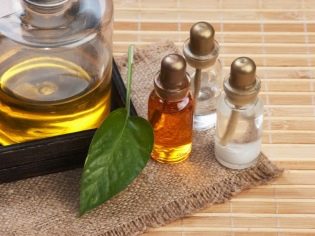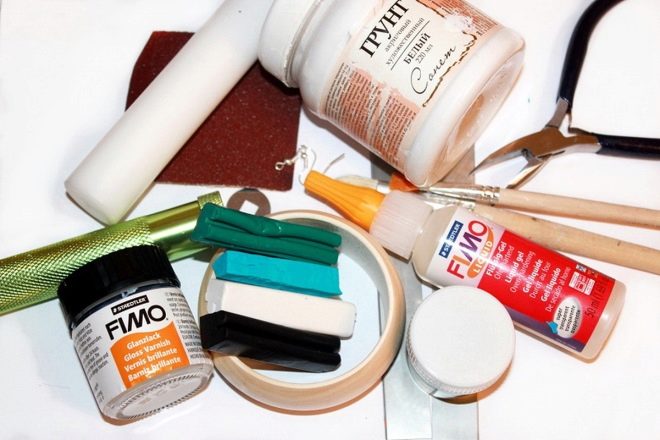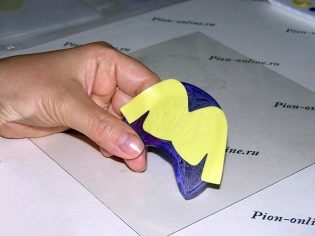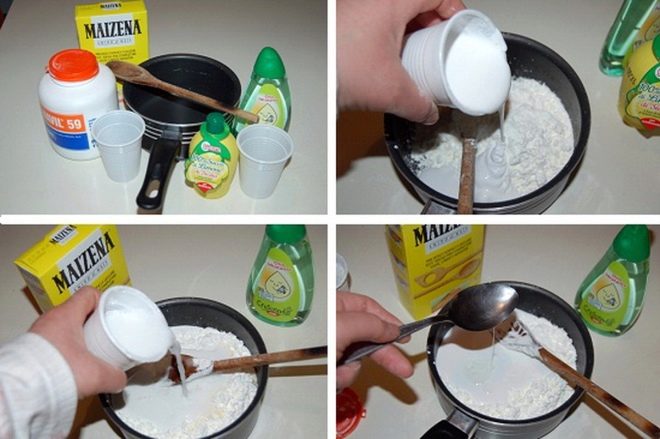Polymer clay
In the modern world, the ability to do something beautiful with your own hands is very much appreciated, therefore it is not surprising that many parents are trying to actively develop the creative abilities of their children from a young age. Plasticine is only the first stage on the way to mastering the art of modeling, but if the child has achieved sufficient success in this matter so that he would like to preserve his creations for a long time, proceed to the use of a more professional material - polymer clay.
What it is?
Contrary to its name, polymer clay or plastic, resembles its natural "sister" only in some properties and method of application, but not in composition. This mixture is a product of the modern chemical industry - it began to be produced in 1964, trying to improve the capabilities of ordinary clay. The main ingredient in almost all types of polymer clay is polyvinyl chloride or pvcbut its exact amount and combination of other components allow you to create variations of this material, which are somewhat different in their properties.
In terms of simplicity of work, this mixture is very similar to clay - it is also easily molded and takes any form (with the exception of too large elements that simply do not stick) and allows making any corrections to unsuccessful creations. At the same time, she has one radical difference: figurines made of polymer clay, which fully correspond to the creator's conception of what was intended, can be perpetuated, since this material loses its elasticity and becomes solid when heated.
Some varieties of this material are able to harden even without additional heating, just by being in the open air.
What does it look like?
It is quite difficult to accurately describe the appearance of this material in its “raw” state, since, depending on the variety, it can be either solid or liquid. Often, of course, hard clay is found - it usually looks about the same as ordinary clay and is also sold in sets with a certain number of different colors. In general, its cubes look slightly brighter than the classic clay, but there is also a colorless version, which is designed for subsequent staining after solidification.
Finished products made by real masters may look like totally unlike ceramicsbecause they are not. Hardened crafts are often similar to plastic figurines, although the used coating plays a huge role in the final appearance, which can be different types of paint or varnish. However, there are products that are not covered from above by anything.
The use of such figures is appropriate in any situations: they can decorate the interior of the room, be a fun toy or even beautiful jewelry.
What is different from cold porcelain?
It should be immediately noted that some experts are inclined to consider cold porcelain a kind of polymer clay, but this view is not shared by all. If you compare the use of polymer clay and cold porcelain, it is very similar - from both types of plastic mass they mold the most diverse objects, which then acquire hardness and permanent form, due to which they can be used not only in the form of exhibition crafts, but also for practical purposes.
Nevertheless, there are more differences than similarities:
- First of all, absolutely do not match the composition of the two mixtures. Polymer clay is based on PVC, to which various plasticizers, softeners and other additives are added. They do not always have a natural origin, but all the same, all global manufacturers provide a completely safe use of the masses even for children. Cold porcelain also has nothing to do with natural clay or porcelain, but was invented much earlier and based on only natural ingredients, including corn starch, glue, butter and glycerin.
At a minimum, the difference in compositions gives at least a slight difference in tactile sensations from modeling, and even such “porcelain” can be prepared even at home, if desired.
- In addition, usually polymer clay requires considerable (up to 100-130 degrees) heating for solidificationwhereas cold china just dries out in the open.
- Polymer clay easy to paint at home, but often it is sold already painted, but cold porcelain is often produced pure white with a clear orientation to the fact that the master himself will paint it.
Composition
Since polymer clay is of a completely different type, it is very difficult to determine the required elements in its composition - you can only select common groups, which include its ingredients:
- The most important thing is the foundation, which should be able to keep the shape. In thermoplastics (polymer clay, hardening when heated) as such a component acts polyvinyl chloride, and the same cold porcelain - a combination of starch and glueOther types of mixtures may have something else as a basis.
- To hardening the mixture at least temporarily was elastic and allowed to sculpt anything, added to the composition plasticizers both synthetic and natural, like oil. While plasticizers in large quantities are present only in the soft mass, so that, depending on their properties, it is determined exactly how the figure must be processed to harden. For example, in thermoplastics, plasticizers digest or lose their elasticity under the action of temperature, while in self-hardening type polymer clays, they simply evaporate.
- Finally, an important, but not mandatory, element of many polymeric clays are dyes. In some cases, not just dyes are added to the mixture, but whole pieces of the material that the creators of the mass would like to imitate. As such a filling there may be a crumb of metal or natural stone, as well as sequins.
Properties
Most types of polymer clay in their original condition are very plastic and resemble ordinary clay, although they differ in density. The latter also depends on the temperature: on average, the colder it is in the room, the harder the mass. At the same time, the self-hardening mixtures become stony from being in the fresh air, therefore, they must be stored in a sealed package, but the thermoplastic retains its elasticity much better.
However, the latter can also dry out and crumble, but usually the phenomenon does not take a catastrophic scale, and the original properties of the mixture can be restored with the help of a softener — any colorless vegetable oil, such as almond or apricot.
In the hardened state, polymer clay retains a constant shape, but differ in weight and strength. Some special types of thermoplastics, characterized by elasticity, are used to model colors: thin petals made of this material can be bent in half, and then again take on their original shape without visible damage.
Kinds
Different varieties of polymer clay are created to obtain a specific effect in finished form, but experts note that it is not forbidden to mix them to obtain some new, completely unusual result.Globally, polymer clay is divided into self-hardening and baking. Self-hardening, in turn, are divided into heavy and light:
- Heavy differ in considerable weight, but also in their ability to withstand it, which makes them a good material for the manufacture of decorative figurines and dolls. However, some types of mixtures such as Kera plast from Koh-i-noor, strongly resemble ordinary pottery clay both before and after hardening. But the mass of the brand Darwi in a frozen form, it is perfectly polished, cut, and, if necessary, also soaked with water for shape correction.
- Easy self-hardening clay is distinguished by increased plasticity and malleability in its original state, which is also reflected in the frozen state: it is from this material that curved petals and flowers are made.
Thermoplastic is divided into even more subspecies:
- The most common is ordinary thermoplastic, which looks like solidified clay and does not change the shade during firing.
- The translucent version is capable of transmitting light, and if there are also dyes in its composition, it changes its color after heat treatment.
- Thermoplastic with fillers allows you to create crafts that look like they are made of natural stone or metal, but liquid thermoplastic is more often used to create enamel, to glue parts, or to transfer a pattern from paper to the surface of the product.
Colors
Today color, white and colorless polymer clay is produced. With color, they work by analogy with plasticine, so for children (at least - those that are just learning the art of modeling), it is best to acquire just such a solution.
The white mixture is not fundamentally different from the color, it simply does not contain a dye, therefore it allows for a wider flight of the master's imagination, allowing him to choose the exact shade. At the same time, it is possible to paint both a raw mixture and a ready-made, frozen sculpture, but in the first case it is better to use oil paints, and in the second case acrylic paints.
Complex compositions, such as dolls, are usually made monochromatic whites and only then painted.
Stamps
There are a huge number of varieties of polymer clay, but most of them are still focused on adults, and even then - not any, but perfectly mastered the skills of working with it. As for children, the range available to them is already much more modest. For them, by the way, they usually choose thermoplastic (for hardening in air, special clay is used), however, due to the nature of the material, it is not recommended for children under 8 years old, and the firing of the finished figures should occur only in the presence of adults.
One of the most popular solutions for children's creativity (and not only) is a mixture Sculpey III (Scalp). Despite its American origin, such a mass is relatively inexpensive, but it is remarkable for its amazing softness and pleases with a huge choice of colors. Available in bars of 57 or 227 grams.
The product-oriented product also has a very popular German brand. Fimowhich is deservedly considered a pioneer in the field of polymer clay production. This manufacturer called the children's line as simple as possible - FIMO Kids. The product is a small (42 grams) blocks of 24 different shades, including with the addition of sparkles.
From mixtures made in Italy, you should pay attention to the line Idigo, producing both baked and self-hardening polymer clay. As for the Russian brands, they are mainly designed specifically for children, and not for serious designers. There are just two brands that are completely devoted to children's creativity - "Flower" and "Yozki".
Which is better?
It is impossible to unambiguously answer which polymer clay is better for modeling, since all its varieties are created just for this occupation, just aimed at different types of use. In particular, for children who are just beginning to learn this art, it is recommended to use the products of the above described children's rulers. There are two main reasons for this:
- firstly, polymeric clays as a whole are supposedly oriented towards the safety of the compound, but only in children's rulers can we guarantee the absence of any unpleasant surprises when the child’s careless work;
- secondly, such mixtures are, on average, softer and easier to work with, they are aimed not so much at creating masterpieces, as at developing general modeling skills.
If the child has already managed to achieve a certain level of skill and even chose a certain activity (imitation of pottery, jewelry, flower modeling), then it is necessary to choose the material for creativity on the basis of the final goal. Each large manufacturer will have rulers that copy ordinary clay, metal or stone, as well as those that contain cellulose and are easily bent even in baked form.
Since each person’s vision of creativity is different, specific advice cannot be given here - the child should try different options until he comes to what he really likes.
Moreover, the masters who have reached a sufficiently serious level note that not a single polymer clay purchased is suitable for creating ideal works, much better mix different varieties in different proportionsby creating a completely new material. However, this level of creativity is likely to be available only to teenagers.
How to choose?
The choice of a particular brand of polymer clay depends on a variety of its characteristics, which can be useful for creating the intended product:
- In particular, for children of primary school age sets are selected, most reminiscent of clay. There must necessarily be a certain range of colors, since at the first stage it is the only way to entice a child. Very often, the baby's first clay is not baked plastic, but one that freezes itself on the open air, because the polymerization of finished products under the influence of temperature can be dangerous if the child wants to work on it independently.
Both solutions are enough to keep ordinary children's crafts for a long time, which are characterized by a high level of artistic content.
- To monochromatic clay should go in that case when the level of creative skills of the child begins to resemble the level of the master. At first they buy ordinary white or colorless clay - this makes it possible to fashion a complex figure and only then paint its individual parts in different colors, which would be almost impossible to make from the initially multicolored material. In the future, the baby can reach a level when his creations are already indistinguishable from industrial ones - at this stage it is time to imitate, and the metal or stone chips in the mixture will help to “forge” other material.
Now you can go back to composite products. Liquid clay can be used as accessories gluing individual parts, and in the process of creating individual parts, extruder polymer clay is used that does not contain air bubbles and is more durable due to this.
Reviews show that real masters do not use any clay in their pure form, mixing it with others. If there is a desire to do this really professionally, it makes sense to buy a real extruder.
Techniques
Of the full-color sets make their creations, usually only children, while serious masters use Other ways to make your products naturalistic:
- The simplest coating for a figure is varnish The lacquer layer protects the surface of the material from mechanical damage, and also gives it extra shine. Lacquered products are usually simple in shape, in particular, this technique is very popular in the manufacture of beads and other small jewelry, lacquer is also very appropriate in combination with polymer clay that mimics another material. Painted products are varnished a little less.
- Paints are used in the modeling of polymer clay as to the shape of the material, and after that. If the product as a whole is monotonous, then it is better to paint the mass before work, for this the composition is mixed with the addition of oil paints, and the master can determine the exact shade of the product. To create complex handicrafts, painting can be used, which is resorted to after the product has hardened - this allows drawing the smallest details and creating intricate patterns.
- Large composite structures, whether dolls, artificial flowers or jewelry, are made by professionals from clay of different colors and shades, after which the individual parts are glued together liquid polymer clay, also known as gel. This approach does not allow to make a product with a very complex pattern, but it makes relatively simple constructions more believable. Such a technique can be composed with a list, the same dolls are usually made using a combination of two techniques.
Instruments
To simplify work with polymer clay, a number of different special tools are used, allowing without extra effort to give the future product the necessary form:
- If you start from the order of processing, then the very first tool is extruder - a special container in which the screw auger automatically kneads the clay, and in the best models also removes air bubbles from the mass. Such a mechanism is considered mandatory for any professional studio or school of creativity, since it greatly simplifies the process of kneading clay, and if it needs to be processed in really large quantities, then you simply cannot do without an extruder.
- A very popular tool are and stackswhich should be familiar to children still at work with clay. Using the stack, you can cut a piece of clay or make its surface flat.
- To give the product a complex texture is used texture sheet. Such sheets, simulating a certain surface or pattern, allow you to achieve the effect that the master could create with his own hands much longer than the entire creation as a whole! Such an assistant wizard looks like a piece of silicone or plastic with a mirror texture of leather, fabric, wood or any relief ornament and pattern. It is enough to attach such a sheet to the surface of the future product so that the texture is imprinted on it, and that’s all - now the polymer clay figurine has acquired an unexpected charm!
- In the modeling of polymer clay, even those tools that, at first glance, cannot be combined with it, can be used. Popular ones, for example, are made of this material. knitting markers - in them, with the help of an ordinary superglue, a metal needle with an eye is glued in, which makes it possible to simplify the favorite occupation of knitters.
Books
For a more detailed study of the theory of art, as well as methods and techniques of modeling from polymer clay, you can use special printed manuals both written specifically for children and aimed at beginners in general. At the moment, such literature in Russian is not very widely represented, but it is still possible to find it, although it is rather difficult.
Numerous thematic sites on the Internet will help to supplement the information received from there, where both recognized masters and professional experimenters share their own experiences, often with multimedia files.
It is very important to note that thanks to the book alone, neither the child nor even the adult can learn to sculpt.Such publications are good because they can give the direction of the search: suggest how to choose the appropriate material, throw some creative ideas, tell about the main styles. They will allow you to send talent (or stubborn aspiration) in the right direction, but actually learn how to sculpt without practice is impossible.
Honestly, even with the desire and availability of material on print publications alone, it is quite problematic to master modeling; an art school or at least video from the Internet would help much more.
Therefore, it is not worthwhile to completely abandon books on the topic, but one should not also make them the main source of experience in this field.
The choice of a specific book is also quite difficult: there are no generally accepted courses. For a child who takes the first steps in modeling from polymer clay, you can still buy some abstract "beginner's guide", but in the future he must choose such literature strictly himself, starting from the fact that he himself seems interesting and useful.
Instruction
Most of the children's varieties of polymer clay are initially very resilient - so much so that many professionals point out the inconvenience of using them to create truly complex structures. Manufacturers achieve such a consistency specifically so that the material does not have to be kneaded, since it is at the kneading stage that children often get tired of modeling with plasticine.
At the same time, even thermoplastic can eventually dry out, and it’s not worth talking about self-hardening clays - they dry out very quickly if the storage rules are not followed. It is usually impossible to restore the latter (unless the mixture soaks when adding water), but the dried-up thermoplastic can again make the softener elastic in the form of apricot or other transparent vegetable oil.
Children are usually molded from soft polymer clay, but at a certain stage of their creative development they reach the need to reliably connect already hardened parts with each other.
Professionals, as a rule, solve similar problems using a polymer gel or liquid polymer clay, which in its raw form is a liquid, but also becomes solid as a result of baking.
For children's creativity, such a scheme may be too complicated, so many parents are trying to find an alternative solution that allows to combine the details. In the role of saving alternative most often serves ordinary latex gluewhich adheres well to most types of hardened polymer clay, is not strongly striking and allows its tinting after solidification.
What to replace?
Contrary to the rapid spread of polymer clay in recent years, this material still did not have time to become available everywhere. If it is not possible to buy it, but you really want to try it, you can try to prepare one of its self-hardening varieties yourself. cold porcelain.
To do this, a mixture of 1 cup of PVA glue and 1 cup of cornstarch, supplemented (1 teaspoon each) with glycerin, hand cream and vinegar, is thoroughly kneaded and placed for half a minute in a microwave, where it is heated to the maximum. The procedure is repeated four times, resulting in a soft plastic mass, not sticky to the hands, which is notable for its considerable elasticity, but still allows to sculpt from it.
If the mixture turns out to be too liquid, the procedure can be repeated once more, and with excessive density and elasticity, the composition is brought to a standard by the gradual addition of water and careful kneading of the resulting mass.
For information on what tools to use when modeling from polymer clay, see the following video.

